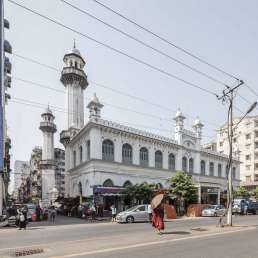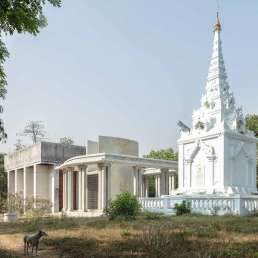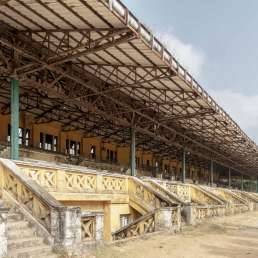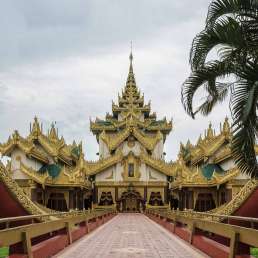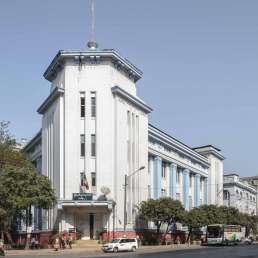Formerly: Reserve Bank of India
Address: 24–26 Sule Pagoda Road
Year built: 1937
Architect: G Douglas Smart (Palmer & Turner)
An impregnable aura surrounds this heavy cut-stone edifice on the corner of Sule Pagoda Road and Bank Street. Two pairs of Ionic columns dominate the recessed entrance. Imposing iron doors bear the inscriptions “Banking Department” and “Issue Department.” Window grilles at the centre further enhance the vault-like impression. Except for two tall patterned windows flanking the entrance, there are no openings on the façade.
The Reserve Bank of India (RBI) was founded in 1935 as British India’s central bank. The Rangoon branch opened in 1937, the year Burma separated from British India and legally became a dominion of Great Britain. The separation did not lead to the creation of a central bank for Burma; instead, the RBI had to fulfil this function for both countries. The rupee was maintained as Burma’s currency, although distinct banknotes were issued for Burma. This parallel system did not operate for very long: the Second World War broke out only a few years later. The RBI’s Rangoon branch fell into enemy hands in March 1942, the only one to do so. The bank’s staff had time to prepare: all vaults were empty when the Japanese marched into the city. Securities were shipped to Calcutta, coins and notes sent up north (where most were sunk in rivers or burned). After independence, the RBI returned to its former offices. Conditions were tough: the Japanese had used explosives on the vaults and, after their retreat in 1945, lootings occurred. There were no water or electricity supplies. Telephone lines were cut. With independence in 1948, the Union Bank of Burma (UBB) was created and took over the RBI building; however, Burma only achieved monetary independence from Britain in 1952. At that time the post-war currency board, seated in London, was abolished. The UBB then became Burma’s central bank, later renamed Central Bank of Myanmar (CBM). In 1993, the private Myawaddy Bank took over the building as the CBM moved to Yankin township.
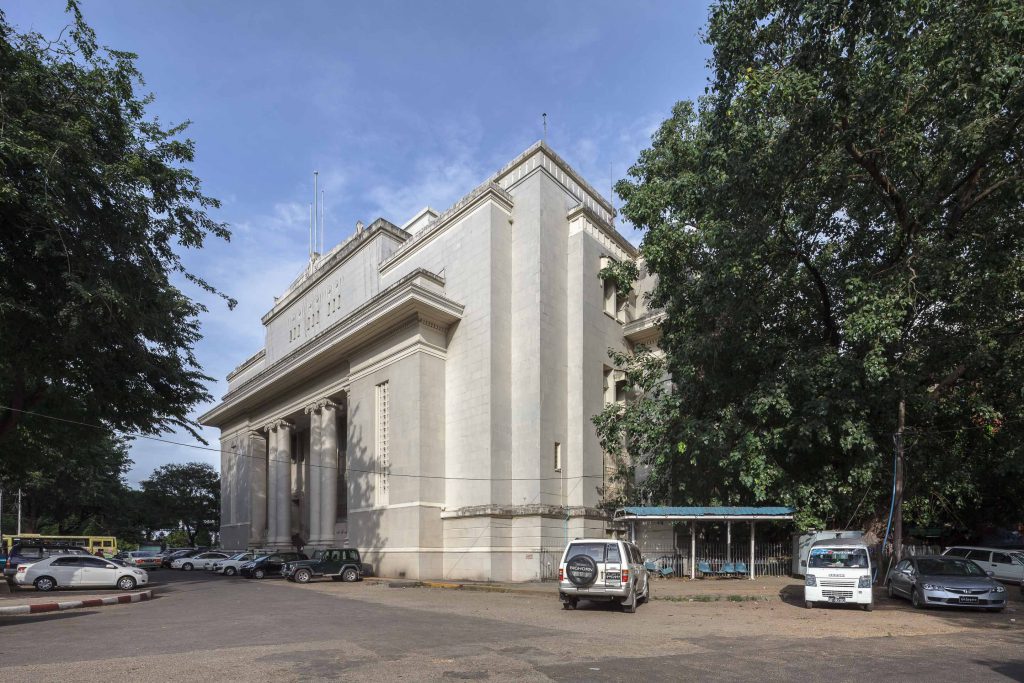
As of late 2014, the building was under renovation. It is slated to host the Yangon Stock Exchange, which is currently being set up—in a twist of history—with Japanese help.
This grandiose building is unique in Yangon’s cityscape and well placed (in all senses) to serve a financial function in the future. The architects and contractors, Palmer & Turner, later built the Chartered Bank building on Pansodan Street. The Hong Kong-based firm continues to operate in the wider region. Both of these historic Yangon projects feature proudly in their online portfolio.
